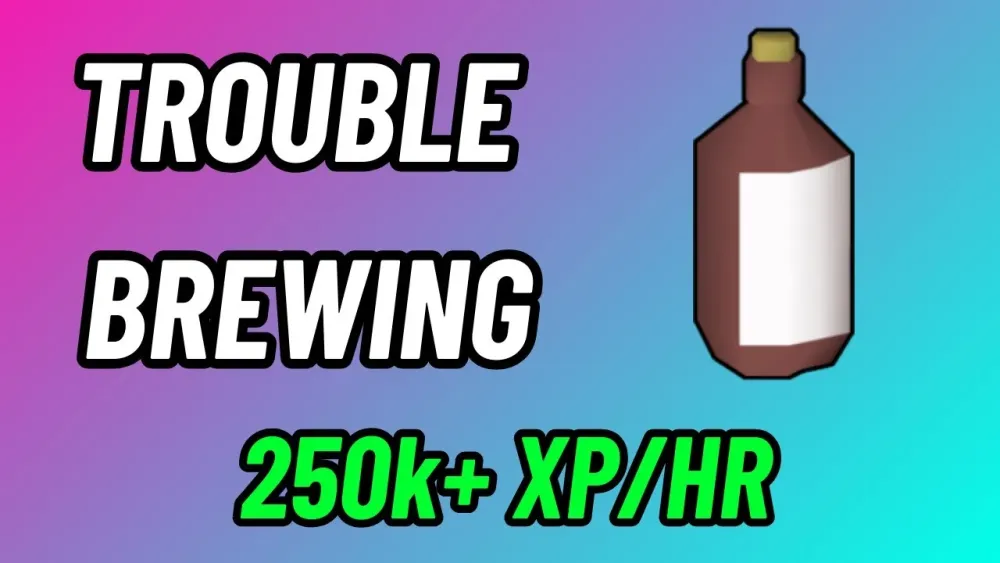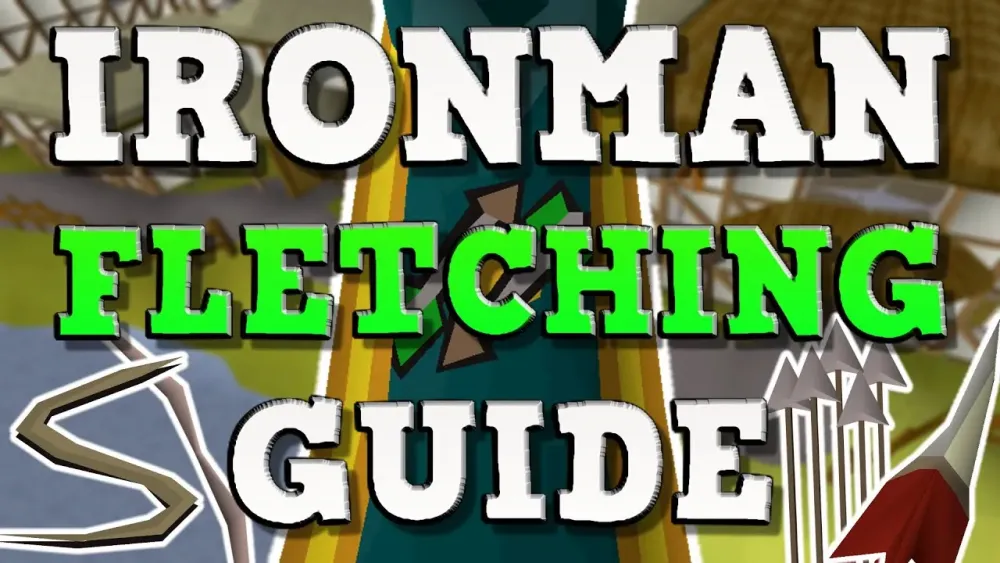Your cart is empty
Understanding Low Level Fletching in OSRS: Tips and Techniques

Fletching is a vital skill in Old School RuneScape (OSRS) that allows players to create various ranged weaponry and ammunition. This skill not only enhances a player’s combat ability but also provides opportunities for profit through the crafting of bows and arrows. Understanding the basics of Fletching is essential for both newcomers and seasoned players, especially when focusing on low-level fletching techniques that can yield significant benefits early in the game.
Low-level Fletching offers numerous advantages for players starting their journey in OSRS. Firstly, it provides a steady income source. Players can craft basic items like headless arrows and shortbows, which can be sold to other players or on the Grand Exchange for a profit. This is particularly beneficial for those who are still building their initial wealth, as it allows them to fund other skills or purchases.
Additionally, low-level Fletching can significantly enhance a player’s combat effectiveness. By creating their own ammunition, players can ensure they always have a supply of arrows, which is crucial for ranged combat. This self-sufficiency means that players can train their Ranged skill without the constant need to purchase arrows from shops or other players, saving both time and money.
Moreover, engaging in low-level Fletching is an excellent way to gain experience points (XP) in the skill. As players craft bows and arrows, they accumulate XP that contributes towards leveling up. Reaching higher Fletching levels unlocks the ability to create more advanced items, leading to even greater benefits as the player progresses through the game.
Low-level Fletching also serves as a gateway to other related skills. For example, it complements Woodcutting, as players need logs to create bows and arrows. This synergy encourages players to develop multiple skills simultaneously, which can enhance their overall gameplay experience.
Lastly, Fletching provides a sense of accomplishment as players see their crafted items in use, whether in their own hands or in the hands of others. This visual representation of their efforts can be particularly rewarding, fostering a deeper connection to the game and encouraging further skill development.
Essential Materials for Low Level Fletching

When diving into low-level fletching in Old School RuneScape (OSRS), having the right materials at your disposal is crucial. Here’s a breakdown of what you’ll need to start your fletching journey:
- Logs: You’ll primarily be using logs to create your bows and arrows. Common options include:
- Normal Logs: Great for crafting standard arrows and shortbows.
- Oak Logs: Ideal for oak shortbows and oak arrows, providing better experience and yields.
- Willow Logs: These are used for willow shortbows and arrows, offering a significant experience boost.
- Feathers: Feathers are essential for fletching arrows. You can obtain them by killing chickens or purchasing them from other players.
- Bows and Arrowheads: You’ll also need materials for crafting arrowheads. Use metal bars to create bronze or iron arrowheads, which will enhance your arrow efficiency.
- Knife: A knife is a must-have tool for fletching. You can easily buy one at any general store or obtain it from various locations.
Having these materials ready will streamline your training process, allowing you to focus on leveling up your fletching skills efficiently.
Best Training Methods for Low Level Fletching
When it comes to training low-level fletching, choosing the right methods can significantly impact your experience gain. Here are some effective training techniques:
| Method | Experience per Action | Materials Required | Level Required |
|---|---|---|---|
| Cutting Logs | 20 XP per log | Normal Logs | 1 |
| Crafting Arrow Shafts | 1 XP per shaft | Logs | 1 |
| Fletching Shortbows | 16 XP per bow | Normal/Oak Logs | 1/5 |
| Fletching Arrows | 1 XP per arrow | Feathers, Arrow Shafts, Arrowheads | 1 |
Start by cutting logs and creating arrow shafts to build your experience. As you reach higher levels, transitioning to crafting bows or fletching arrows will yield better experience rates. Remember, it’s all about efficiency and maximizing your time spent training!
Useful Fletching Equipment for Beginners
Starting your journey in Fletching can be a bit overwhelming, but having the right equipment can make all the difference. Here’s a quick rundown of the essential tools you’ll need to get started:
- Bows: The first thing you’ll want to focus on is acquiring various types of logs. You can fletch them into bows, which are crucial for leveling up your skills. Begin with Normal Logs and progress to Oak Logs, Willow Logs, and so on.
- Arrow Shafts: You’ll need a knife to cut logs into arrow shafts. A Bronze Knife is the most basic option and is easily obtainable.
- Knives: A knife is required to fletch logs and create arrow shafts. You can use any knife, but starting with a basic one will suffice.
- Strings: To make bows, you will need bow strings. You can create these by using a crafting skill or purchasing them from other players or shops.
- Fletching Table: While not strictly necessary, using a fletching table can speed up your crafting process and help you manage your resources efficiently.
By gathering these basic items, you’ll be well on your way to mastering low-level Fletching. Remember, practice makes perfect!
Common Mistakes to Avoid in Low Level Fletching
When you’re just starting with Fletching in OSRS, it’s easy to make some rookie mistakes. Here are a few common pitfalls to watch out for:
- Not Using the Right Logs: Always check your Fletching level and use logs appropriate for your skill. Sticking to lower-level logs can help you level up faster.
- Ignoring the Experience Rates: Not all Fletching activities are created equal. Some methods provide significantly more experience than others. For example, crafting longbows is often more beneficial than short bows.
- Overlooking the Importance of Bow Strings: Make sure to stock up on bow strings. Not having enough can slow your progress significantly.
- Failing to Use the Fletching Skill Guide: The in-game skill guide is your friend. It can offer valuable insights into what items to craft for maximum experience.
- Neglecting Quests: Some quests can provide valuable experience or unlock better fletching methods. Don’t skip these opportunities!
Avoiding these common mistakes will help streamline your Fletching experience and get you to higher levels much more quickly. Happy fletching!
Progressing to Higher Levels: What’s Next?
Once you’ve mastered the basics of low-level fletching in Old School RuneScape (OSRS), it’s time to look ahead and consider how to progress to higher levels. Advancing your fletching skills not only opens up new possibilities in crafting but also increases your potential for making gold. Here are some tips to help you transition smoothly:
- Set Clear Goals: Before you dive into higher-level fletching, decide what you want to achieve. Do you want to create better bows, or are you aiming for the profit from darts and arrows? Having clear objectives will keep you focused.
- Level Up Efficiently: Utilize the most efficient methods for leveling up. For instance, crafting Maple Longbows is a great way to gain experience while still making a profit. Check out fletching guides for a step-by-step breakdown of the best training methods.
- Consider Quests: Some quests provide hefty experience rewards that can give you a significant boost in fletching levels. Make sure to check out quests like “The Knight’s Sword” for an easy experience gain.
- Join a Community: Engaging with the OSRS community through forums or Discord channels can provide valuable insights and tips from fellow players who have successfully leveled their fletching skills.
By setting clear goals, using efficient training methods, leveraging quests, and connecting with the community, you’ll find your journey to higher levels not only smoother but also more enjoyable.
Conclusion and Final Tips
In conclusion, low-level fletching in OSRS may seem simple, but it lays the groundwork for more advanced crafting skills. As you progress, remember these final tips to enhance your experience and efficiency:
- Stay Organized: Keep your inventory tidy. Use noted items to save space and ensure you can efficiently craft without running back and forth to banks.
- Track Your Progress: Regularly check your fletching level and set mini-goals. Monitoring your progress can keep your motivation high.
- Experiment: Don’t be afraid to try out different fletching methods or items. You may discover a new favorite way to train that you enjoy.
- Utilize Events and Bonuses: Keep an eye out for double experience weekends or other in-game events that can significantly boost your leveling speed.
Remember, the key to enjoying OSRS is to have fun while you’re playing. Fletching can be a rewarding skill, and with these tips, you’re well on your way to becoming a master fletcher. Happy crafting!
